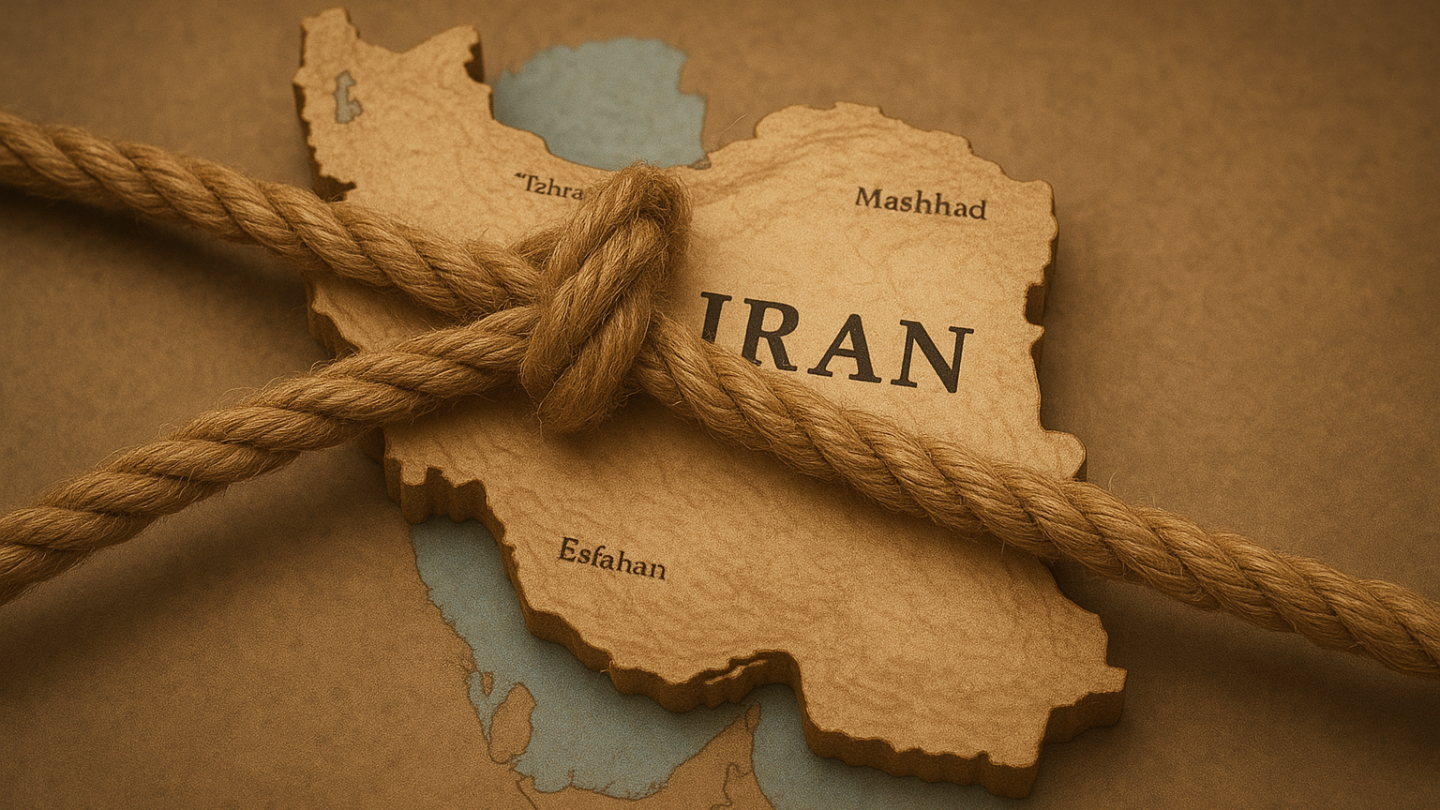The Treasury Department has imposed its latest sanctions targeting Iranian weapons procurement networks at an extraordinary moment of Iranian vulnerability.
Earlier this month, Tehran’s parliament approved the removal of four zeros from the national currency, a desperate cosmetic measure to mask the rial’s catastrophic collapse to 1,150,000 to the dollar. When a regime literally can’t fit its currency denominations on banknotes, you know strategic strangulation is working.
The regime has never been more vulnerable yet paradoxically more dangerous.
This monetary capitulation signals that President Trump’s maximum pressure campaign must intensify, not relent. The regime has never been more vulnerable yet paradoxically more dangerous.
Iran faces systemic collapse. Its nominal gross domestic product has plummeted from $401 billion to $341 billion. Inflation rages at 42%. Internal polling shows 92% dissatisfaction with the government. Tehran’s water crisis is so severe that Iranian President Masoud Pezeshkian openly discusses relocating the capital, an unprecedented admission of infrastructural failure.
Now, Iran is re-denominating its currency, a move that Iranian parliamentarian Hossein Samsami correctly noted won’t revive it. Instead, the action merely highlights the currency’s worthlessness.
Yet this failing state has achieved a military breakthrough that fundamentally alters the Middle East’s strategic calculus. Iran’s operational deployment of hypersonic weapons — demonstrated devastatingly in June when its Fattah series missiles penetrated Israel’s multilayered defenses — compresses decision-making windows to mere minutes. The Khorramshahr-4 system, with its 80 submunition payload and sub-10-minute flight time to Tel Aviv, creates a credible decapitation threat that renders traditional deterrence obsolete.
This paradox of internal collapse driving external aggression demands a strategy that attacks the connective tissue between Iran’s weakness and its weapons programs. That connective tissue runs directly through Beijing.
Iran’s military reconstitution depends entirely on Chinese supply chains. Without Chinese-sourced solid-fuel propellants, advanced gyroscopes, accelerometers and dual-use electronics, Tehran’s missile program grinds to a halt. This technological dependency represents Iran’s strategic Achilles’ heel, one that the Trump administration must ruthlessly exploit.
The path forward requires three interlocking campaigns.
Israel’s revolutionary shift from containment to “enforcement” — preemptively dismantling threats at their source — demonstrates the new strategic reality.
First, targeted economic warfare beyond sectoral sanctions. The administration must impose crushing secondary sanctions on specific Chinese banks, shipping companies and technology firms enabling Iran’s weapons programs. These entities aren’t mere sanctions violators; they are also co-belligerents in Iran’s military enterprise. When Chinese corporations face a choice between the $25 trillion American economy and selling missile components to a regime that’s literally dropping zeros from its currency, the decision becomes elementary.
Second, persistent cyber operations create continuous friction in Iran’s military-industrial complex. This means corrupting manufacturing data, introducing subtle errors in guidance software and disrupting command links between Tehran and its proxies. Israel’s remarkable intelligence penetration, demonstrated by pre-positioned assets that crippled Iranian air defenses during Operation Rising Lion, shows what’s possible. American cyber capabilities can impose devastating costs without firing a shot.
Third, aggressive information warfare weaponizes the regime’s greatest fear: its own people. Today’s currency re-denomination provides perfect ammunition. Every hypersonic missile represents millions of worthless rials that could have provided clean water. Every centrifuge spinning at Natanz means another town without electricity, while the regime literally can’t print money fast enough to keep up with its own economic destruction. When Iran’s Islamic Revolutionary Guard Corps procurement officers skim millions while the national currency requires scientific notation to express, that corruption becomes a strategic vulnerability.
The window for action is narrowing. Israel’s revolutionary shift from containment to “enforcement” — preemptively dismantling threats at their source — demonstrates the new strategic reality. American interceptor stockpiles, depleted by 25% of Terminal High Altitude Area Defense inventory in just 12 days of conflict, cannot sustain prolonged defensive operations. We cannot win a war of attrition against cheap drones with million-dollar interceptors.
Iran’s regime teeters between dropping zeros from its currency and adding zeros to its missile arsenal.
For Israeli leadership, the message is clear: America will provide massive but necessarily time-limited support. Plan accordingly. For the Trump administration, the imperative is equally stark: Strategic strangulation must accelerate immediately.
The tools exist. The vulnerabilities are mapped. Iran’s regime teeters between dropping zeros from its currency and adding zeros to its missile arsenal. The October sanctions show that the administration recognizes the threat. Now, Mr. Trump must transform recognition into relentless action.
The alternative — allowing Iran to complete its hypersonic buildup while its currency collapses — is strategic malpractice. The time for half measures has passed.
Published originally on October 14, 2025.
